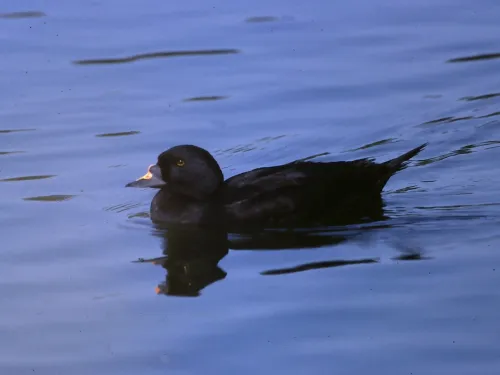Common rock-rose
Golden banks of common rock-rose make a spectacular sight on our chalk and limestone grasslands in summer. A creeping shrub, it is good for bees, moths and butterflies.
Want to learn more about wildlife near you? You're in the right place, search below and discover the nature you can help protect in Kent.
Golden banks of common rock-rose make a spectacular sight on our chalk and limestone grasslands in summer. A creeping shrub, it is good for bees, moths and butterflies.

The common rosefinch is a rare visitor to the UK, usually passing through in autumn.

The common sandpiper breeds along rivers, and by lakes, reservoirs and lochs in upland Scotland, Northern England and Wales. It can be spotted as a passage migrant at many inland wetlands across the UK.

The common scoter has suffered large declines in the UK, threatening its survival here. Look out for this duck feeding at sea in winter when its numbers are bolstered by migrating birds.
Common sea-lavender can be found around our coasts on mudflats, creek banks and saltmarshes. Despite its name, its not a lavender at all, so doesn’t smell like one.

The smaller of our two UK seal species, common seals are also known as harbour seals. Despite being called "Common", they are actually less common than grey seals!

The Common sexton beetle is one of several burying beetle species in the UK. An undertaker of the animal world, it buries dead animals like mice and birds, and feeds and breeds on the corpses.

The diminutive common shrew has a distinctively pointy nose and tiny eyes. It lives life in the fast lane, eating every 2-3 hours to survive, and only living for a year or so. Look out for it in the garden.
Despite its name, the "common" skate is not so common anymore. In fact, they are Critically Endangered.
Common sorrel is a common plant of grasslands, woodland edges, roadside verges and gardens. It is also known as 'sour ducks' because its leaves taste tart.

The common spangle gall wasp produces a small, disc-shaped growth, or 'gall', on the undersides of oak leaves. Inside the gall, the larvae of the wasp feed on the host tissues, but cause little damage.

Forming mats of straight, bright green stems, Common spike-rush does, indeed, look like lots of tightly clustered 'spikes' near the water's edge of our wetland habitats.